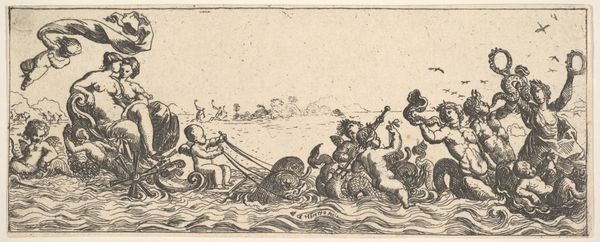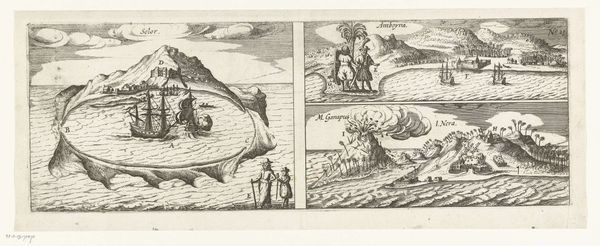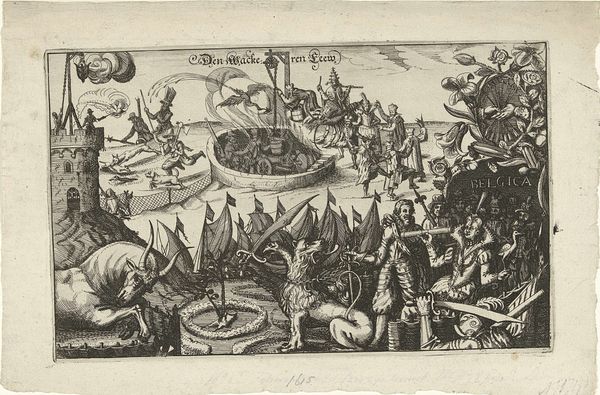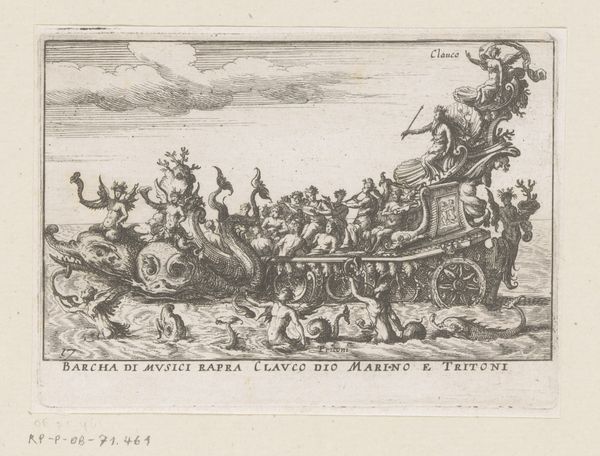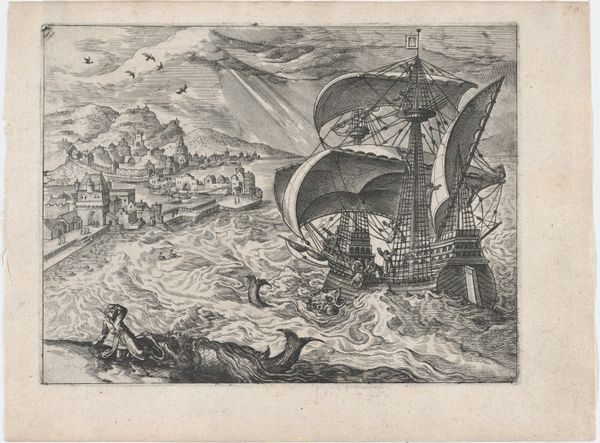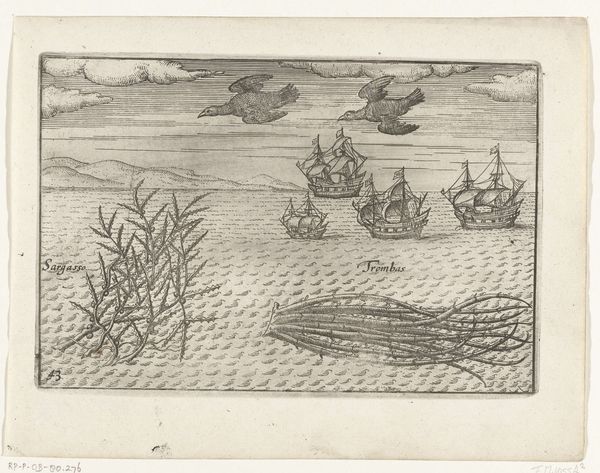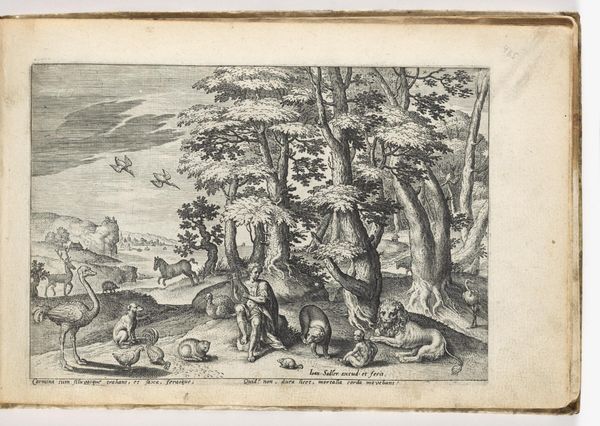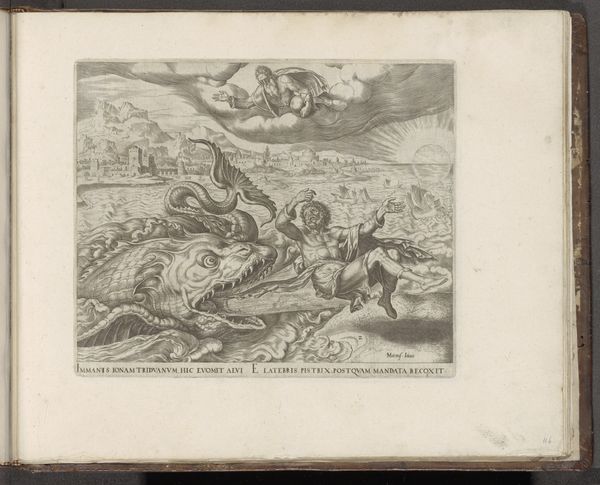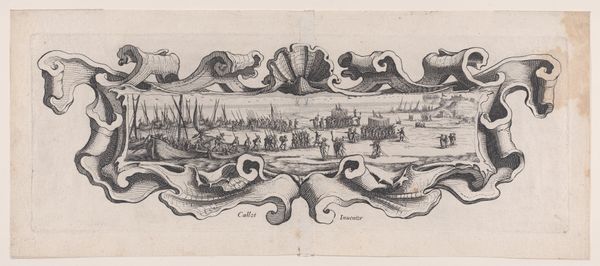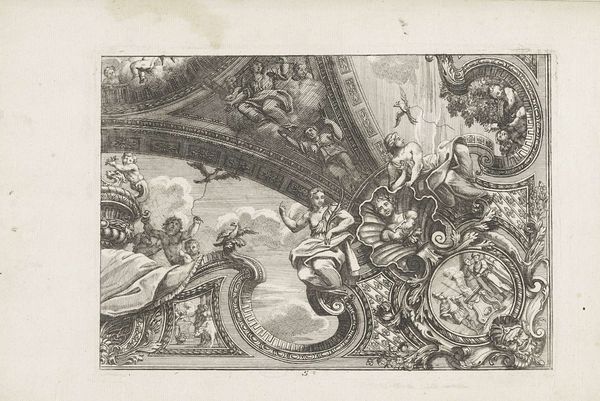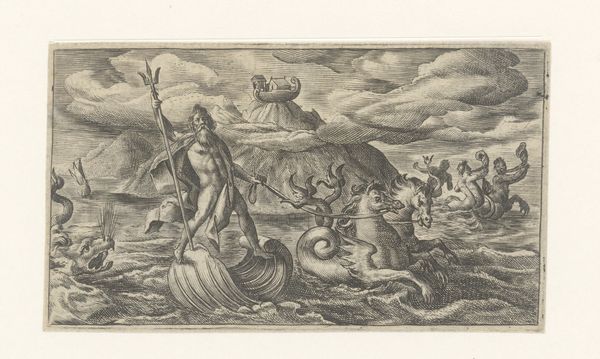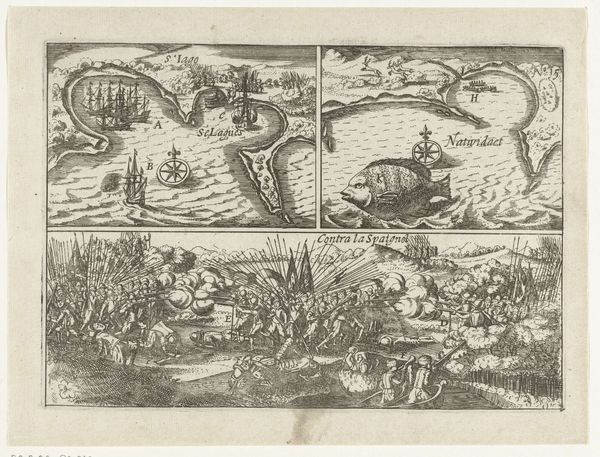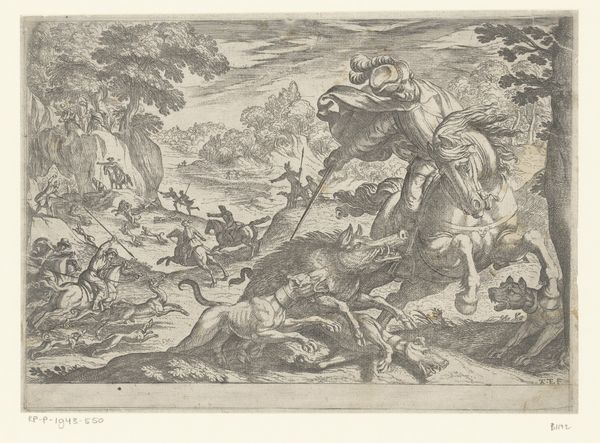
print, engraving
#
baroque
# print
#
pen sketch
#
old engraving style
#
landscape
#
figuration
#
history-painting
#
engraving
Dimensions: height 95 mm, width 132 mm
Copyright: Rijks Museum: Open Domain
Curator: Let’s discuss this intriguing 17th-century engraving, “Vrouwen op de rug van een schildpad en dolfijn en in een schelp,” or “Women on the back of a turtle and dolphin, and in a shell,” housed here at the Rijksmuseum. Editor: My first impression is pure fantasy—it's wonderfully strange! The elongated dolphin with riders, the seashell boat... there’s such a tactile quality despite it being a print. Curator: Indeed! And the anonymous creator masterfully manipulates line and texture through engraving to represent each vehicle’s composition. This period was all about ornamentation. Imagine the work that went into each line of the dolphin skin, each scale on the turtle shell, each ripple on the clam shell... The level of craftsmanship itself elevates the material. Editor: That's interesting to consider alongside the period’s political theatre and social rituals. Prints like these circulated widely. To whom? How did these representations of power or status function? This engraving portrays river goddesses – “Deesse” inscribed by each one – yet they aren't presented in a heroic or moralizing context. Rather, we find them joyously riding hybrid, grotesque crafts! I imagine them playing a very specific role in performance for wealthy individuals and noble families. Curator: That element of public performance really does inform this, doesn’t it? In the broader landscape of 17th-century Dutch society, there's also a real burgeoning art market. Affordable prints brought allegorical subject matter into middle class homes, further diffusing ideals of virtue or prestige to the everyday sphere. The composition of sea creatures contrasts with the depiction of land. It must convey some sort of meaning related to maritime life, commercial enterprise, and travel in the Netherlands. Editor: I find that it emphasizes the commodification of those ideals. It invites us to think about art's place in crafting status, making symbols readily consumable. What does this engraving *do*, materially, in the world? I find the level of craftsmanship and ornamentation serves a particular social purpose during a very important era of artistic consumption. Curator: Absolutely, understanding its position as a reproduced image helps contextualize this strange artwork's intended societal role in seventeenth century Europe. Editor: Indeed! From considering its making to reflecting upon its purpose in society, this fantastical engraving offers some meaningful material for future audiences to unpack.
Comments
No comments
Be the first to comment and join the conversation on the ultimate creative platform.
